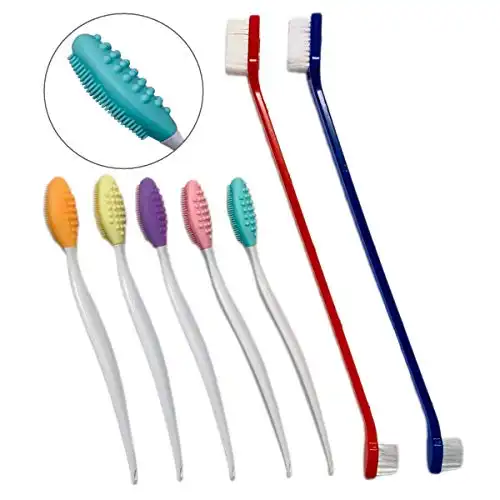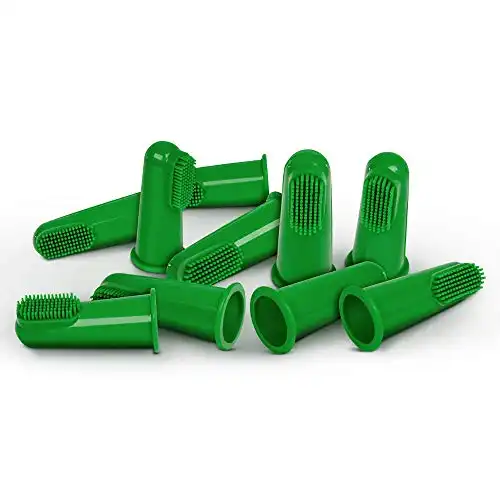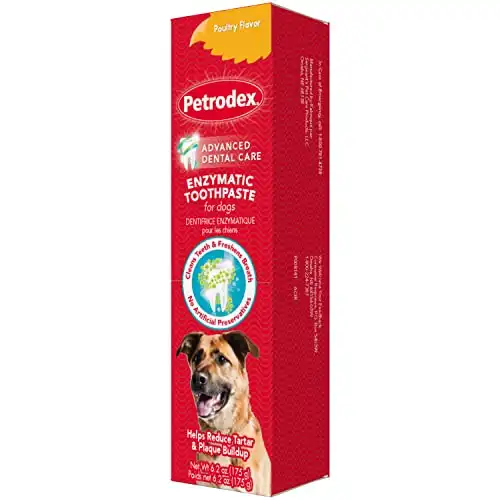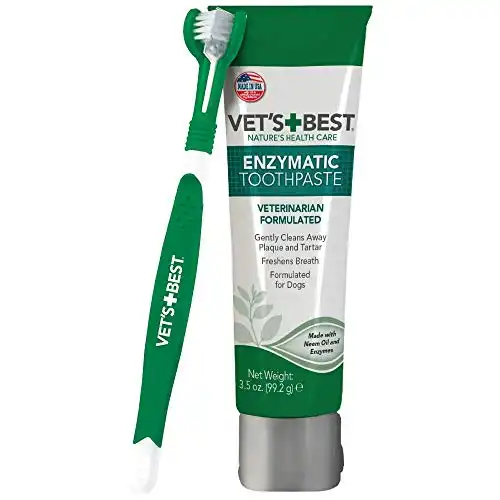How to Brush a Dogs Teeth That Hates Being Brushed
Brushing your dog’s teeth is an essential part of the canine healthcare process. Without regular cleaning of the teeth and gums, your dog can develop bad breath, dirty gums, and various dental diseases.
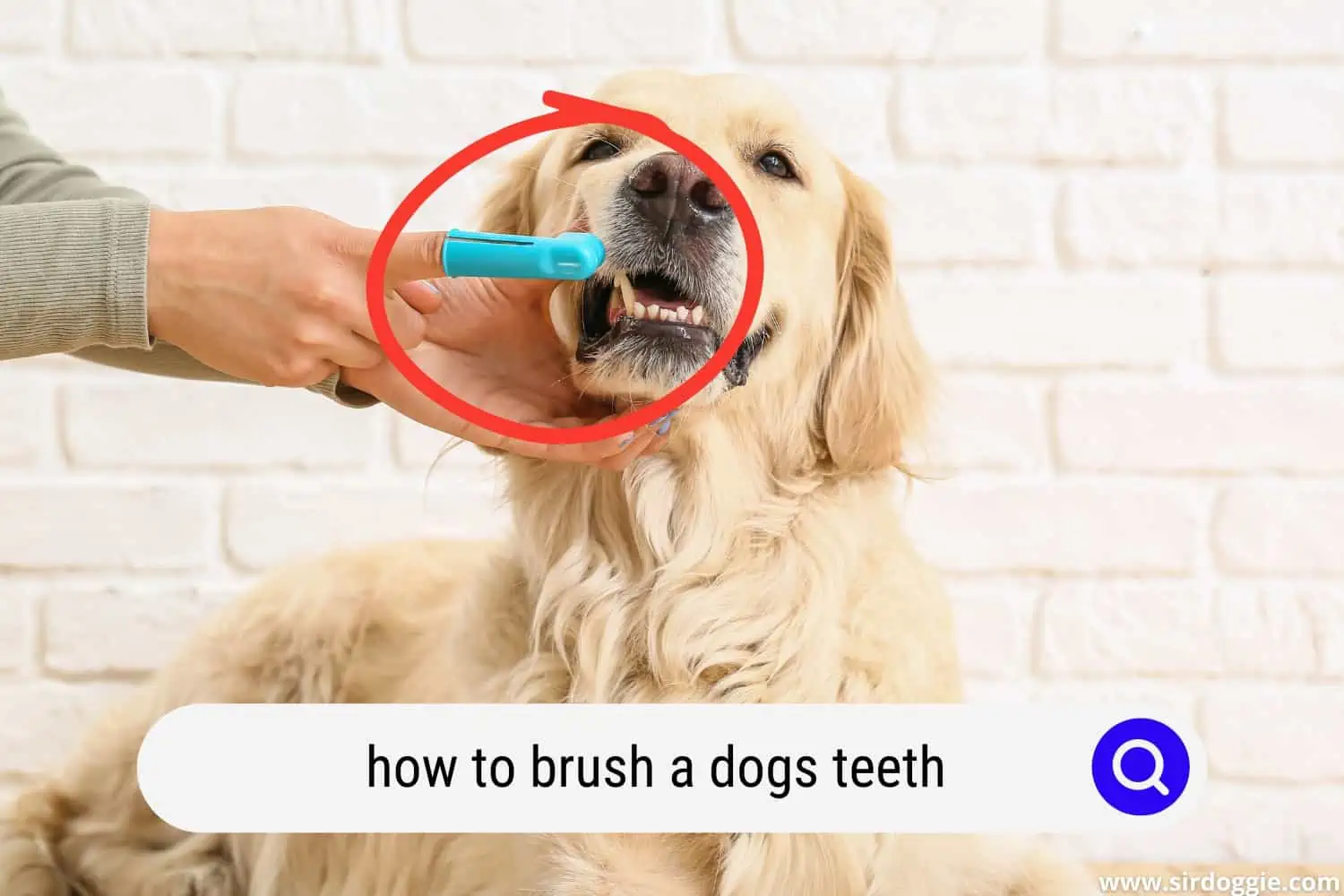
However, it can be hard to brush a dog’s teeth when they don’t like you poking around in their mouth.
If you want to brush a dog’s teeth that hates being brushed, use the following tips:
- Start from a young age
- Try brushing when they’re relaxed or tired from exercise
- Use a longer toothbrush to minimize accidental biting
- Take them to the vet’s office
To learn more about brushing a dog’s teeth that hates being brushed, read on.
Some of the links in this post are affiliate, and we may earn a commission.
Related Reading: Can I Brush My Dog’s Teeth With Activated Charcoal?
How to brush your dog’s teeth
Use a doggy toothbrush
Similar in design to human toothbrushes, dog toothbrushes usually have very soft bristles. Different size toothbrushes are available for large and small dogs.
Use a finger brush
A finger brush is a small, flexible brush that fits over the end of your finger. These combine the cleaning action of a toothbrush with the feel and comfort of the human finger.
Use your fingers
If you would prefer not to use a brush, you can use your finger to clean your dog’s teeth instead. You can also combine your finger with some soft cotton or gauze to improve cleaning action.
As with humans, toothpaste substantially improves tooth cleanliness. Special doggy toothpaste can be bought from the pet shop, or you can make your own using baking soda and coconut oil.
What if my dog doesn’t like to get their teeth brushed?
As with children who are first learning to brush their teeth, some dogs do not like the feel of their parent’s finger or toothbrush in their mouth.
Your doggie might become very agitated and there is a risk of being bitten while putting your fingers inside their mouth.
To avoid this nervousness, it’s best practice to start cleaning your dog’s teeth at a young age. You should ideally start at around 8-16 weeks, and it takes time and practice before they’ll be completely comfortable.
You should start by brushing your dog’s teeth once a week. In the beginning, you should only use your finger or a little piece of soft cotton. Using your finger or cotton allows your doggie to get used to something being inside their mouth without the sensation of bristles.
If possible, combine brushing with playtime, as your dog will be more willing to let you touch them.
As for initiating the brushing process, here’s how:
Start by playing with your dog – rub its belly and stroke it – then slowly slip your finger into its mouth.
Eventually, your dog will have no problem with objects entering their mouth, and you can brush their teeth freely.
How often should you brush your dog’s teeth?
In an ideal world, you would brush your dog’s teeth every day. This is often impractical, though, so if you can brush your dog’s teeth at least 2 or 3 times a week, you’re doing a good job.
Also, you should take your dog to the veterinarian every six months to one year. The vet can perform a proper check-up and a deep clean of your dog’s teeth. This deep clean will remove any plaque or tartar that has built up and help your dog avoid gum diseases.
The Importance of Brushing Your Dog’s Teeth
There are more benefits to brushing your dog’s teeth than improving their breath. Dogs can develop some serious health complications if their teeth are left to fend for themselves.
It’s important for pet parents to recognize that it’s ultimately on them to maintain their dog’s health. That’s why I love the term “pet parent”. Just like a parent has to brush their young child’s teeth, dogs need the same sort of parenting.
And no, it’s not because dogs are just like children. Since we’ve domesticated dogs, we’ve helped extend their overall life span. Due to a longer life, it’s important for us to help maintain their overall well-being.
Here are some of the health issues caused by poor dental hygiene in dogs:
- Tartar and plaque: this buildup doesn’t stop at the mouth. It can build up to the point where it transplants to other parts of the body and causes blockages
- Periodontal disease: this is gum disease and is one of the most common diseases to affect dogs ensuring regular oral hygiene for your dog is one of the best ways to fight it
- Internal Organs: toxins from oral diseases in dogs are absorbed into your dog’s bloodstream which can start negatively affecting their organs
This isn’t meant to scare you. Don’t feel you need to start brushing your dog’s teeth twice a day. Keep reading for more tips and guidelines for brushing your dog’s teeth.
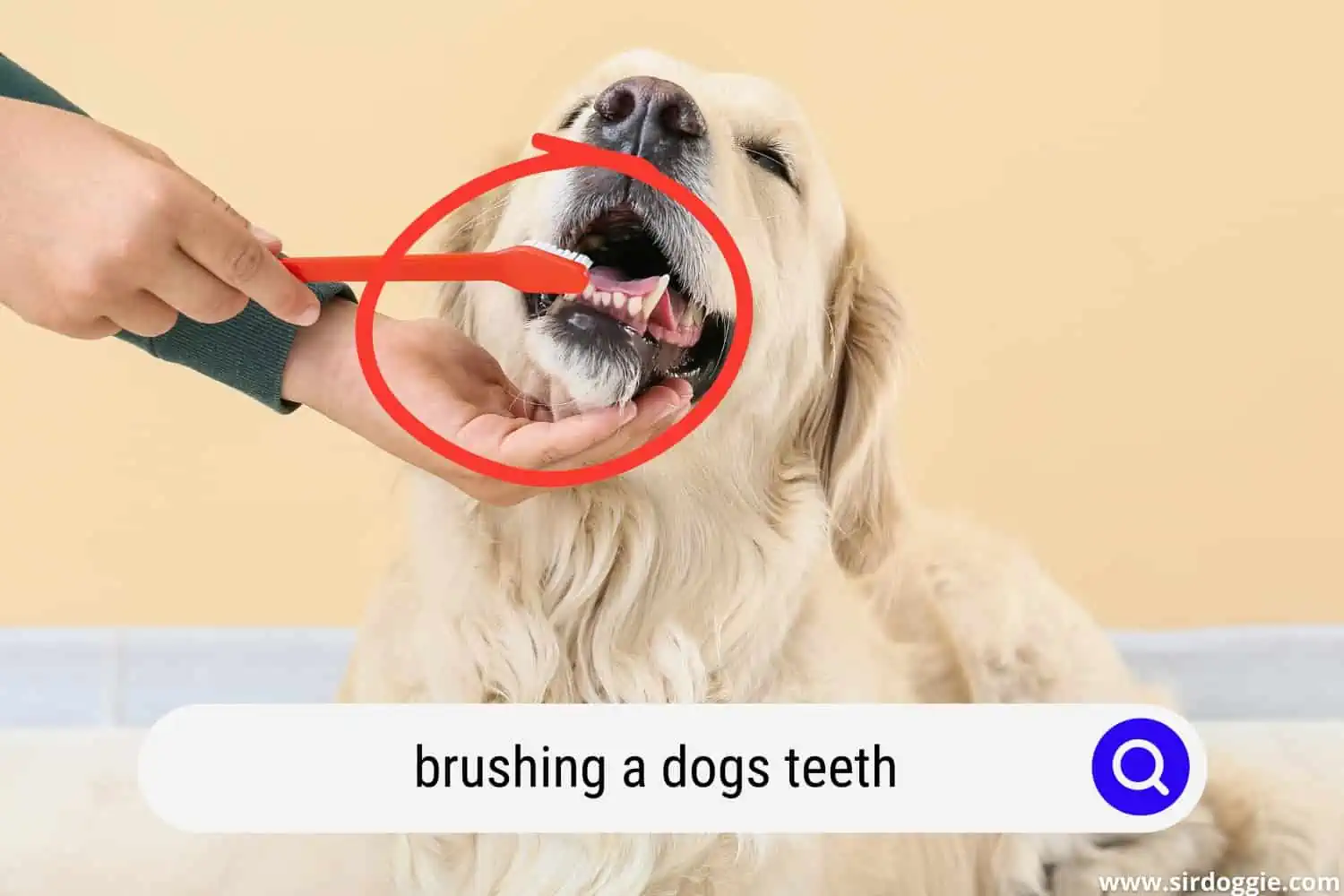
How to brush a small dog’s teeth?
No matter the size of your dog, the techniques for brushing the teeth are the same.
- First, apply the toothpaste – this can be done by using your finger to spread the toothpaste evenly across all the teeth front and back inside and out. For small dogs, this is a little bit easier as the paste can be applied in one single swipe. When doing this, be careful not to apply pressure to any teeth or scratch the inside of the mouth.
- Once the toothpaste is applied, use a toothbrush or finger brush to brush the teeth slowly. Make sure the toothpaste gets into the teeth and all the way around to the backs of the teeth.
- When you have finished brushing your teeth, gently rinse the teeth with water and let your dog have a good drink. If you want, you can give their dog’s teeth a rinse with some doggy mouthwash.
Larger dogs follow a similar technique to small dogs. However, you will have to spend longer on each of the teeth cleaning between the teeth and any gaps. For smaller dogs, this is not as easy as the gaps can be very small.
What age should I start to clean my dog’s teeth?
You should start to clean your puppy’s teeth between the ages of 8 to 16 weeks. If you start this from a young age, your dog will understand what is happening and be comfortable with brushing at later stages in life.
When first starting to brush a puppy’s teeth, let your dog taste the toothpaste first. Place a tiny amount on your finger and let your dog lick it as if it were a treat.
This will help limit surprises during the first brush. But let’s be honest unless it smells foul, your doggie will likely lick it up right away (well, at least mine does).
My dog really cannot accept my finger or a toothbrush in its mouth
If cleaning your dog’s teeth is a hard task and you feel uncomfortable with it, you must go to the vet at least once every six months for a thorough cleaning.
Veterinary cleaning is much deeper than what normal brushing provides. It is often performed under anesthetic so your dog will not feel uncomfortable.
As an alternative to teeth brushing, you can also buy special treats that help remove plaque and tartar. These are normal dog chews that have properties that help clean the teeth and remove plaque. They also contain antibacterial agents that will help kill any bacteria in the mouth.
It’s a bit of a myth, however, that treats or kibble can clean a dog’s teeth. They may help remove some tartar, but it cannot be compared to brushing
Another option is to use antimicrobial rinse. It’s similar to human mouthwash and will help keep their breath fresh and kill any nasty bacteria in their mouth.
If brushing irritates your dog’s mouth, you can use gauze or cotton on your finger. A cotton cleaning is more like polishing the dog’s teeth; it won’t do as good a job as brushing. However, it may be more comfortable for your doggie.
I also like the ‘SPRAY Me’ dental spray from TruDog which you can check out by clicking here. This is a great option for pet parents who are struggling to get any sort of brushing done with their dogs. The SPRAY Me dental spray is:
- holistic and all-natural
- made with essential oils
- targets plaque, tartar, and bad breath at their source
- bonds with dog’s saliva to work throughout their entire mouth
When first getting your dog comfortable with teeth brushing, have shorter brushing sessions, and allow for more time in between each session. You need to get them used to having the toothbrush or finger brush in their mouth for shorter periods before you can extend the length of time that each session lasts.
As with any dog training task, it can help to provide a treat after teeth brushing. A treat reward will make the dog associate teeth cleaning with a happy time. You can also play with the dog and rub its belly to help it associate teeth brushing with fun.
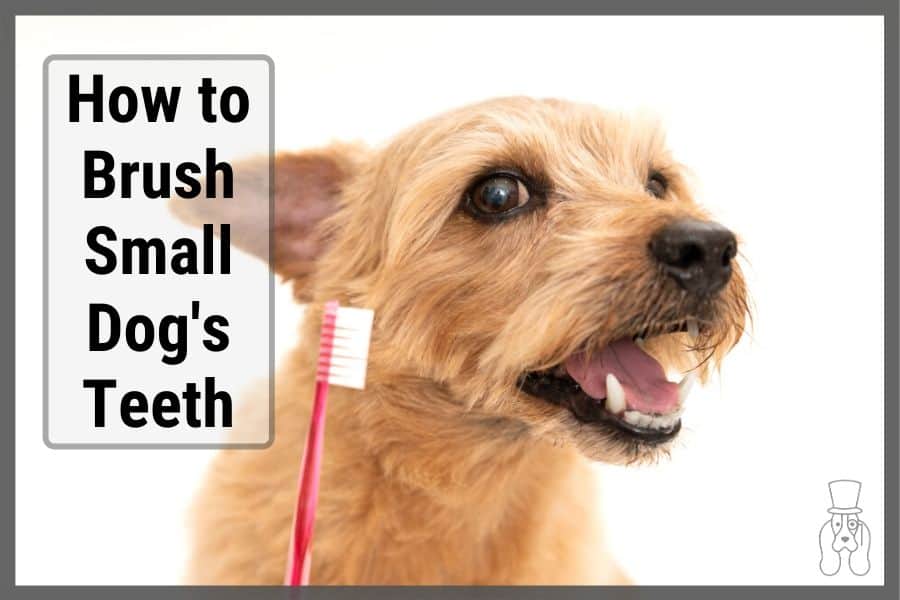
Final thoughts
As with any dog care task, there are some parts that your dog will enjoy – and other parts it will not.
No matter what you do, don’t give up training your dog to enjoy brushing its teeth. It will take time but is ultimately very rewarding. And like most dog training exercises, you need to build up to a full brushing slowly. Don’t rush it.
When you brush, you should use products specifically designed for dogs. These products include finger brushes, doggy toothpaste, dental treats, and doggy mouthwash. If you incorporate all of these into your dog’s teeth hygiene routine, your dog’s mouth will smell great and be disease-free for years to come.

Family Dog Expert Author
Hi there! I’m Stuart, a devoted dog lover and family dog expert with over a decade of experience working with our furry companions. My passion for dogs drives me to share my knowledge and expertise, helping families build strong, loving bonds with their four-legged friends. When I’m not writing for SirDoggie, you’ll find me hiking, playing with my beautiful dog, or studying music.
